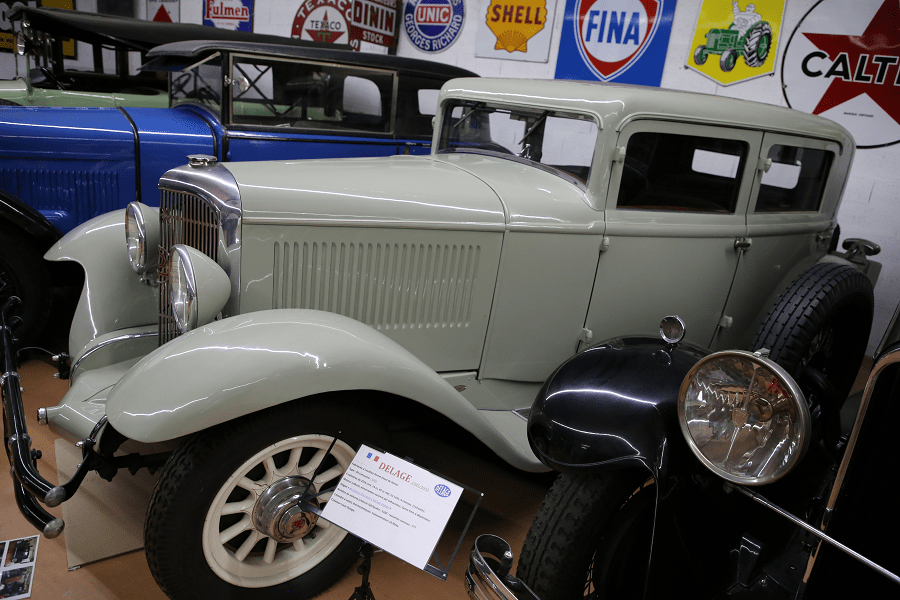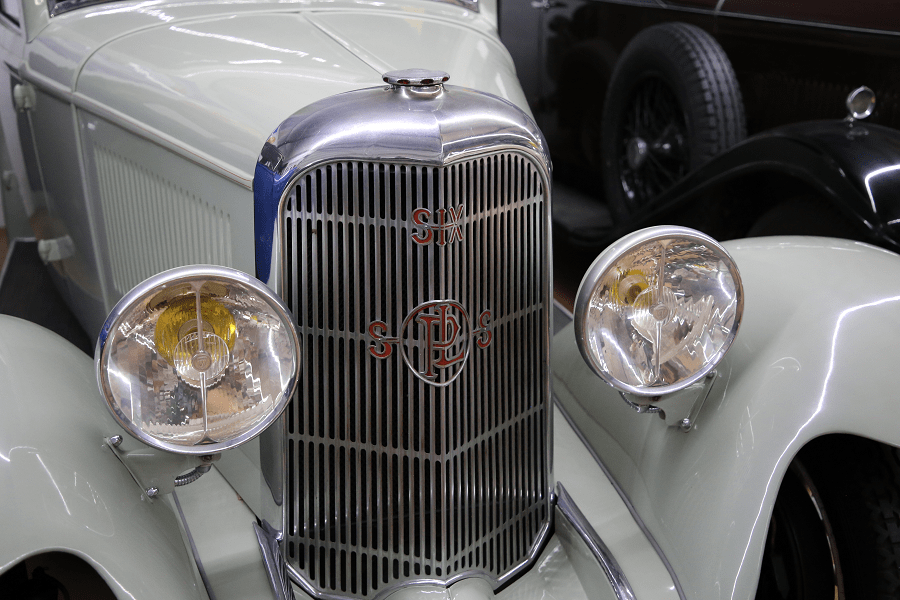Panhard & Levassor CS X 68 Berline from 1930 with six cylinders, 2516 cc, 75 HP. Max. speed: 120 km/h
The Panhard CS is a luxury car, most commonly sold with a four-door sedan/saloon body, introduced by Panhard & Levassor at the end of 1929 for the 1930 model year. It was presented as a smaller companion model to the 8-cylinder Panhard DS model. Publicity of the time indicated the “S” in the name stood for “surbaissées” (the cars having an “underslung” chassis).
The car was launched with a 6-cylinder in-line Sleeve valve engine of 2,344 cc, placing it in the 13CV car tax band. The factory bodied “CS Type X68” four door sedan/saloon/berline offered seating for 4/5 people and had a separate luggage locker at the back. There were also various coupé and Cabriolet bodied cars produced. By 1932, when the “Type X68” gave way to the “Type X72”, 1,028 of the former had been produced.
Produced in parallel with the “Panhard CS Type X68” was the “Panhard 6 CS Spécial / Type X69 Spécial”, produced between 1930 and 1933 with a slightly larger 2,516 cc 6-cylinder in-line engine during which time 1,310 were produced.
In 1932 the “Type X68” was replaced by the “Type X72” which was also known as the “Panhard CS RL”. “RL” stood for “roue libre”, indicating that the otherwise classic 4-speed transmission incorporated a “free-wheel” device. The “Type X72” used the 2,516 cc 6-cylinder previously reserved for the “CS Spécial”, which placed it in the 14CV car tax band.
There were also “Panhard CS RL2” versions of the car offered with a “short” 2,800 mm (110.2 in) or a “long” 3,340 mm (131.5 in) wheelbase.
The complexity of the naming was reduced in 1935 after which the car was branded simply as the “Panhard CS”. 2,173 of these “Type X72” CSs were produced before the version was replaced in 1936.












